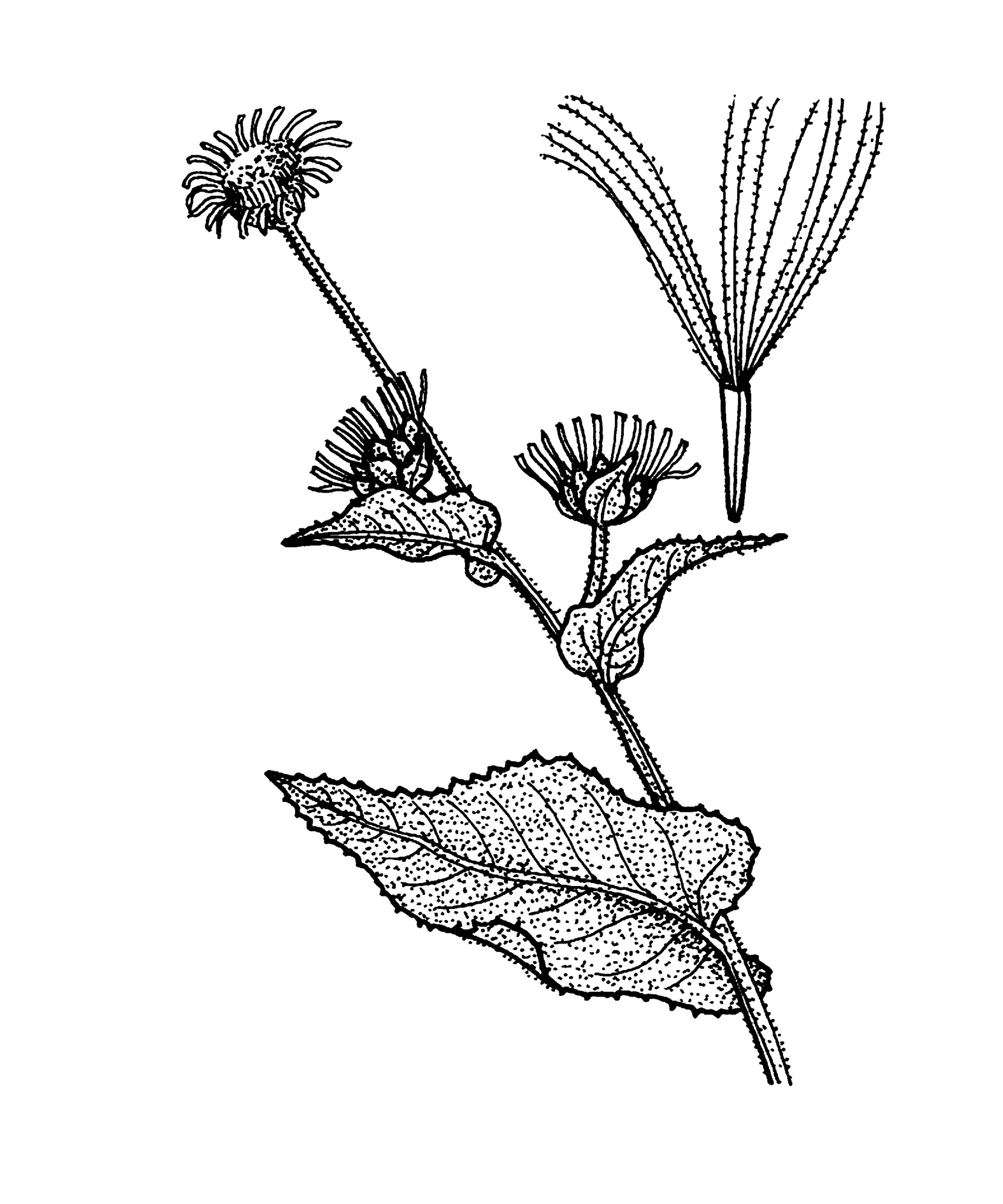
The name used by Pliny (23–79), probably for I. helenium L.
Perennial or rarely annual or biennial herbs or subshrubs, mostly hairy. Stems erect or ascending, usually branching. Leaves basal and along stems, alternate, margins entire or toothed, sessile or petiolate. Capitula radiate, diskoid or diskiform, terminal, solitary or a few in panicles or corymbs, with stalks. Involucral bracts in many rows, overlapping, unequal. Receptacle flat or convex. Ray florets female, ligulate, rarely tubular or absent, yellow. Disk florets bisexual, tubular, yellow. Achenes cylindrical, ribbed. Pappus of barbed bristles.
Yellow florets, the outer ones often with a very short ligule.
About 100 species from Europe, Asia and Africa.
Source: (2002). Dahlia. In: . Horticultural Flora of South-eastern Australia. Volume 4. Flowering plants. Dicotyledons. Part 3. The identification of garden and cultivated plants. University of New South Wales Press.
